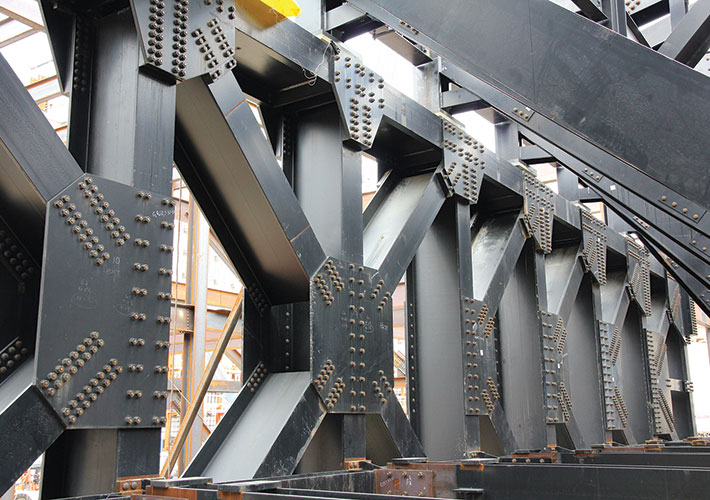
Aligned and Combined
The New Look of ASTM Structural Bolt Specifications
Structural fasteners originated as a practical, high strength replacement for the practice of riveting. Now, these fasteners are used extensively to hold together all types of steel structures.
Hundreds of millions of structural fasteners are produced to ASTM International standards each year. These critical building and infrastructure components are installed by contractors, steel fabricators and steel erectors to various industry requirements.
Until recently, structural fasteners were covered by six different ASTM International standards: A325 and A325M, A490 and A490M, F1852 and F2280. These standards covered steel and alloy steel heavy hex bolts as well as twist-off type structural bolt/nut/washer assemblies.
The six standards were maintained by Subcommittee F16.02 on Steel Bolts, Nuts, Rivets and Washers, part of ASTM Committee F16 on Fasteners. However, it became difficult for F16.02 to effectively maintain continuity across the standards. The subcommittee was spending more time on maintenance than it was on thoughtful and progressive improvement of the standards.
In order to simplify matters, F16.02 initiated a task group to consolidate the standards. The task group would take a top down approach to the consolidation, recrafting a single new standard from the six. The new standard would need to address the requirements covered in the six older specifications, while also adding new information.
After the original combined draft was created, it was proposed as a solution to the F16 executive committee, who gave it a great deal of support. The proposal was also discussed with the leadership of American Institute of Steel Construction and the Research Council on Structural Connections, which were very helpful in clarifying industry needs and providing relevant feedback. There would need to be compromise by the F16 committee to adopt such a significant change, but also compromise within the standard itself to have a chance of passing a committee vote.
Our task group of well-respected producer, general interest and user members was instrumental in shaping not only a better standard, but also one that had enough committee support to pass a ballot.
The result of the effort of the task group, the committee, and ASTM staff was the approval of F3125, Specification for High Strength Structural Bolts, Steel and Alloy Steel, Heat Treated, 120 ksi (830 MPa) and 150 ksi (1040 MPa) Minimum Tensile Strength, Inch and Metric Dimensions, a new structural bolt standard that will replace the six current structural fastener standards.
The resulting document is an example of what can happen when fresh perspective, cooperation and effort combine in the consensus standard process. F3125 maintains virtually all of the previous technical requirements, while adding needed changes and improvements. All of this was accomplished very efficiently.
Users of the new standard will include fastener manufacturers, structural engineers and numerous related steel construction agencies. While there may be some short-term issues with a change of this magnitude to such far-reaching standards, the benefits of a simplified document will be recognized for years to come. From a committee perspective, the ongoing maintenance will be much easier, allowing valuable committee time to be spent identifying and addressing other areas of improvement within Subcommittee F16.02.
Chad Larson, a "second-generation fastener geek," is the president of LeJeune Bolt Company, Burnsville, Minnesota, producer vice chairman of ASTM Committee F16 and chairman of Subcommittee F16.02 on Steel Bolts, Nuts, Rivets and Washers.
 SN Home
SN Home Archive
Archive Advertisers
Advertisers Masthead
Masthead RateCard
RateCard Subscribe
Subscribe Email Editor
Email Editor